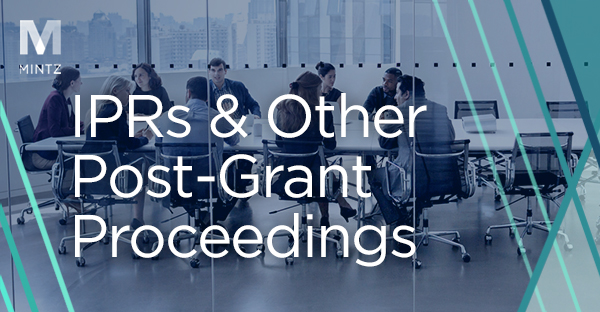Patent Owner Tip #4 For Surviving An Instituted IPR: Take the Time to Use Your Expert as an Expert
The expert declaration provides a unique opportunity for Patent Owners to bolster their case during the discovery period of an inter partes review (“IPR”) proceeding. We previously detailed how to effectively use an expert declaration in the Patent Owner’s Preliminary Response (“POPR”). Now we turn to maximizing your expert’s testimony for the Patent Owner’s Response (“POR”).
Importantly, an expert declaration does more harm than good when it merely repeats what is stated in the briefing and lacks corroborating evidentiary support. PTAB Judges can disregard expert testimony that merely repeats attorney argument, as seen in InfoBionic, Inc. v. Braemar Manufacturing, LLC, IPR2015-01704, Paper 11, (P.T.A.B. Feb. 16, 2016) (denying institution), where Patent Owner’s expert restated arguments from the POPR without further explanation. Id. at 12-13. The Board rebuffed the expert’s testimony as “too conclusory” and gave it little weight. Id. at 14-15 (citing 37 C.F.R. § 42.65(a) (“Expert testimony that does not disclose the underlying facts or data on which the opinion is based is entitled to little or no weight.”)). It is thus important to fully support the expert testimony with detailed reasons and documentary support underlying her opinions.
Importantly, unlike the POR, the expert declaration is not subject to any word count or page limitations and thus presents the Patent Owner with an opportunity to use the expert declaration to provide detailed technical, historical, and industry-related information, and opinions that provide the Board with important factual context as it assesses patent validity. Because the Board presumably reads expert declarations in their entirety, the expert declaration can be used to fully flesh out a Petitioner’s substantive failures (such as why an obviousness combination is incorrect), misstatements, and factual errors. A detailed and well-written expert declaration containing important facts and more fully-developed opinionsalso puts a Petitioner in the difficult position of having to decide which arguments to address and how to address them in the limited space of a Reply brief. And if anything, err on the side of over-inclusion, as there are limited opportunities to introduce new evidence in the Sur-Reply brief.
In sum, Patent Owners should take the time to use their expert as an independent thinker—not simply parrot the attorney arguments in the POR. Use your expert to tell a story about the patented invention and fill-in the spaces in and around the arguments in the POR. The years of knowledge and industry experience of an expert should be tapped into and used to not only persuade, but educate, the Board about what skilled artisans were doing at the time of the invention, what the industry was going through, most importantly, and why skilled artisans would not have found the patent claims to be anticipated or obvious at that time.
To learn more from the Mintz IP team, follow us on LinkedIn and check out our Exclusive Rights podcast.



